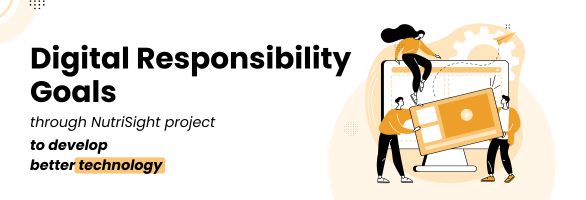
How Digital Responsibility Goals helped us develop a better technology
Openness and transparency have always been a cornerstone of Open Food Facts. This commitment is reflected in our mission, vision, values, and citizen-powered model, which explain why we remain open and independent. We believe that everyone should have access to the data we collect, and we strive to make our database as open and accessible as possible. This commitment to openness is reflected in our approach to data sharing and collaboration:
- Most of our discussions are public, either on our Slack, on our GitHub, or on our forum, etc.
- We release our data under the Open Database License (ODbL), which allows anyone to use, modify, and share our data as long as they attribute us and share any derivative works under the same license.
- All our source code is free and open source, available on GitHub, and we encourage contributions from the community.
- We have a public API that allows anyone to access our data and integrate it into their own applications.
As shared in previous blog posts (NutriSight part 1 and NutriSight part 2), we’ve received financial support from the European Commission and the DRG4Food program to develop a new technology, NutriSight, to extract automatically nutrition information from product images.
The DRG4Food program aims to create a data-driven food system that inspires trust throughout the food chain. The program goal is to assess how Digital Responsibility Goals (DRGs) can guide digital solutions in the food ecosystem towards open, user-centric and trustworthy applications.
Since that’s literally what we have been doing for a decade, it’s a good occasion to reflect on how we make those principles alive, day in and day out.
What are Digital Responsibility goals, and how are we making them live in Open Food Facts, and through our latest NutriSight project?
Digital Responsibility Goals is a framework designed by the Identity Valley NGO to make responsible behaviour in the digital world visible, comparable and comprehensible. Similar to how the UN Sustainable Development Goals (SDGs) enable a common agenda for a more sustainable planet, the DRGs seek to promote digital technologies embedded in universal rights and values.
Below, we highlight a few of those DRGs and show how these have been a guidance during the development of the NutriSight project, and more broadly what is our current stance with respect to these DRGs at Open Food Facts.
DRG1: Digital Literacy and Access: Open Food Facts, through its mobile app and website, strives to provide free and competent access to food data. We also actively promote Digital Literacy of users by teaching them how the whole app works, with explainers on nutrition, signup, image upload, and whenever a user has to make a decision which could impact the quality of data for other users.
DRG2: Cybersecurity: Open Food Facts , although it does process very little to no personal data, takes cybersecurity threats seriously. We follow cybersecurity best practices, such as end-to-end data encryption during HTTP requests, setting-up a firewall and making sure our software and packages are patched with the latest security updates.
DRG3: Privacy and User Sovereignty: While NutriSight is only focused on public product data, Open Food Facts adheres to principles of privacy by design and default, ensuring that user contributions are managed responsibly. The project’s commitment to open source and open governance ensures transparency in its data handling and technological development, allowing for public scrutiny and trust.
DRG4: Data Fairness: Open Food Facts champions the idea that food data is a public good. By making data open and transferable between parties, it supports the DRG of “Data Fairness”, fostering balanced cooperation among various stakeholders in the food data ecosystem: consumers are finally at an equal footing with food producers. Besides, being able to extract nutrition without being dependent on food producers is the guarantee of this increased data fairness.
DRG5: Trustworthy algorithms: The extraction algorithm of NutriSight is fully auditable, as it is open source and can be tested on any input. The training data and the model are freely available for anyone to analyze.
DRG6: Transparency – NutriSight’s Core Mission: The NutriSight project directly addresses the DRG4Food goal of increasing transparency in the food chain. By developing an AI-powered tool to automatically extract nutritional information from food packaging photos, NutriSight makes vital data more accessible and understandable for consumers. This empowers individuals to make more informed dietary choices, a key focus of DRG4Food’s “personalized nutrition” and “consumer food choices” use cases.
DRG7: Human Agency: NutriSight promotes Human Agency of users with a carefully crafted user interface that emphasizes this agency. They can accept or refuse parts or all of the Machine predictions for nutrition in a very empowering way “Tap to fill”, and stay fully in control of the algorithm output, which assists, not replaces.
Integrating Digital Responsibility Goals into our development process can sound like a scholar process, but reviewing your design, product, community decisions against it can help improve the experience for users, and society at large, even for organizations that were founded on those principles. Are things we take for granted as open source / open data activists understandable by our users? Do we take time to explain them clearly, and in context, as they benefit from our work?
That way, we will ensure more people understand that while free software and “free” data might be free as in beer, they have wider advantages for an open society, and should thus be supported.
